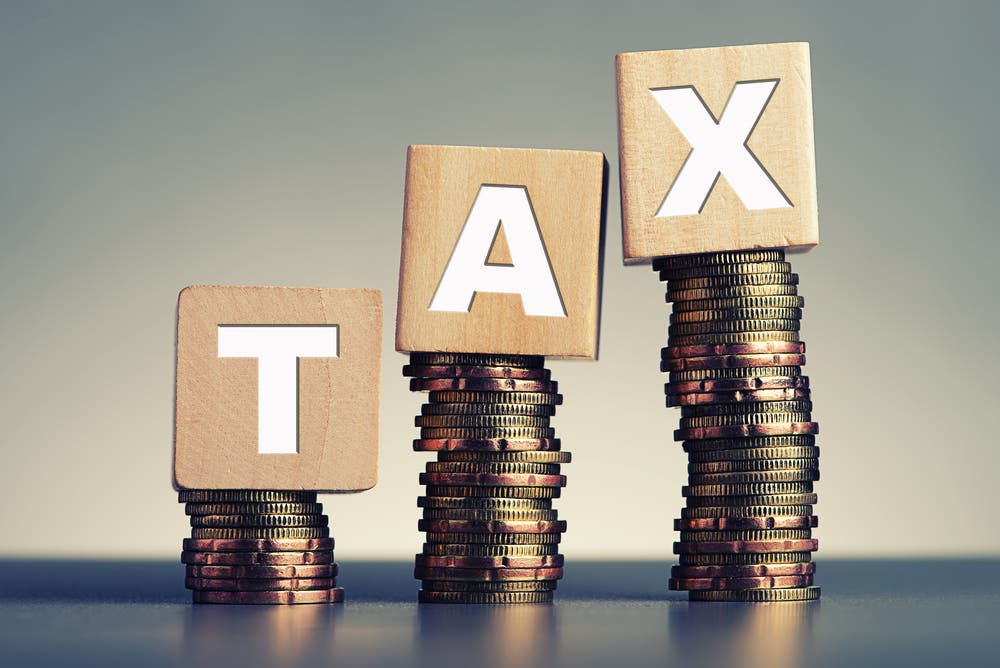Household Bills
Freezing thresholds will push eight million more adults into 40% tax band

The number of adults paying the 40% higher-rate of tax is set to rise to 14% by 2027-28, according to new data.
This is equivalent to 7.8million workers and a rise from the 3.5% who paid it in 1991-92 and the 11% currently paying it.
The increase has been blamed on the Government’s decision to freeze income tax thresholds for six years.
The freeze is now in its second financial year and sees the personal allowance at £12,570 and the higher-rate tax threshold of £50,270 locked in. The additional rate of tax, set at 45%, was also reduced this year from £150,000 to £125,140.
2.5 million extra higher and additional-rate tax payers
Frozen tax rates and a reduction to the additional rate of tax will see 2.5 million more taxpayers brought into the higher and additional rates of income by 2027-28, the final year of the Government’s freeze.
The 40% band, originally meant for those on high incomes, has not kept up with rises in wages, claims the Institute for Fiscal Studies (IFS), which compiled the research.
It said since the 1970s income tax thresholds have risen by default with inflation. But now these are frozen, many more people will start paying the higher rate of tax.
It means that by 2027-28 more than one in eight nurses and one in four teachers will be higher-rate taxpayers.
The freeze to thresholds will result in a fall of 1.4% in real house disposable income by 2027-28. It also means that for the 40% tax rate to impact the same number of people as it did in 1991, it would need to be closer to £100,000 in 2027-28, around double its actual rate of £50,270.
In the next five years, the UK will see the biggest tax increase since 1979, when VAT rose to 15%, the IFS said.
‘Fiscal drag on steroids’
Laith Khalaf, head of investment analysis for AJ Bell, said: “Millions of people will find themselves with a much bigger tax bill in the coming years, thanks to tax thresholds being frozen or cut. Governments often tend to rake in extra coffers from salaries rising faster than tax thresholds, but the current freeze imposed by the Treasury is fiscal drag on steroids.
“With taxes and interest rates rising, clearly the perception will be that the Treasury and the Bank of England are heaping pressure on consumers when they need it least. That’s hard to deny, but the mitigating factor is the Government is in a fiscal hole not entirely of its own making.
“The costs of the pandemic have not disappeared with the vaccine, and since then, the energy support scheme has added to the Government debt pile. The Treasury faces difficult choices between raising taxes and curtailing spending, or abandoning debt targets, which might make things worse if the market’s reaction to the mini Budget is anything to go by.”
‘Tax bills are only going in one direction’
Paul Barham, partner at Mazars accountants, said: “Tax bills are only going in one direction for millions of people, and that is up. With a gaping hole in the public finances, it’s an easy target for the treasury.
“Thresholds that have been left on ice, and the lowering of the 45p tax band, has been a double whammy for taxpayers. Taxpayers that are now starting to feel the effects with millions set to be dragged into the higher and additional rate tax bands in the coming years.
“This makes tax planning even more critical. If salary sacrifice is an option through your employer, consider using it to reduce your taxable earnings or think about increasing your pension contributions, making the most of the increased annual allowance of £60,000.
“Benefits like a season ticket loan, company car, cycle to work scheme or claiming tax-free childcare can also be used cut your taxable earnings.”
‘Not a sensible way to make tax policy’
The authors of the IFS report said: “In the space of 40 years, higher rates of income tax will have gone from a feature of the tax system reserved only for the top few percent, to one that impacts a far more substantial proportion of the population, drawing in a sizeable fraction of people working in jobs not typically thought of as very highly paid – such as nurses, teachers and electricians.
“Increasing the scope of higher tax rates to encompass a larger share of the population is not necessarily undesirable – choices in this area reflect the government’s priorities around work incentives and redistribution.
“However, freezing thresholds and allowing the tax system to be arbitrarily shaped by the vagaries of inflation rate fluctuations is not a sensible way to make tax policy.”